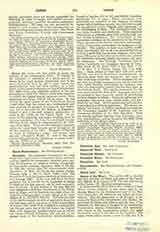

Canoness. The assistance of women in the work of the Church goes back to the earliest times, and their uniting together for community exercises was a natural development of religious worship (Paulowski, De diaconissis comment., Ratisbon, 1866; J. Reville, Le role des veuves dens les communautes chret. primitives, in Bibl. de l’Ecole des hautes etudes: Sciences relig. I, 231-51, Paris, 1890; Goltz, Der Dienst der Frau in den ersten christlichen Jahrhunderten, Leipzig, 1905). Rules were laid down for their guidance, but it was left for St. Augustine of Hippo to draw up the first general rule for such communities of women. It was written in the year 423 and was addressed to Felicitas, Superioress of the Monastery of Hippo, and to Rusticus, the priest whom St. Augustine had appointed to have charge of the nuns (Migne, P.L., XXXIII, 958-65). Towards the close of the eighth century the title of canoness is found for the first time, and it was given to those communities of women who, while they professed a common life, yet did not carry out to its full extent the original Rule of St. Augustine (sanctimoniales quae se canonical vocant, Council of Chalons, 813, can. 53; see the second book of De Institutione sanctimonialium, Council of Aachen, 816 or 817, and Hefele, Conciliengeschichte, IV, 17 sqq.). These canonesses were practically an imitation of the chapters of canons regular which had then recently been revived through the introduction of the “Re la vitae communis” of St. Chrodegang of Metz. The canonesses took but two vows, chastity and obedience. Their superiors were known as abbesses, often held princely rank and had feudal jurisdiction. The occupations of the canonesses consisted in the recitation of the Divine Office, the care of the church vestments, and the education of the young, particularly the daughters of the nobility. The number of these communities multiplied very rapidly; but as all who entered did not do so from a spirit that was entirely religious, there soon came differences in the observance of the rule, whence the distinction between regular canonesses and secular canonesses. (See Ducange, Glossarium med. et infimae Latinitatis, s.v. Canonicae. Jacques de Vitry, Hist. Occid. II, 31; Bonif. VIII, in Lib. Sext. C. 43, § 5 de elect. I, 6; Extray. Comm. III, 9 de relig. dom.) Some abbeys of these latter still exist, a few Catholic and several Protestant establishments (in Hanover alone there are seventeen), and many of them hold large properties. This is explained by the fact that the secular canonesses were mainly recruited from noble families, particularly in Germany, and, when the Reformation passed over the land, gave up the Catholic Faith. The regular canonesses, for the most part, follow the Rule of St. Augustine, but local circumstances have been the means of introducing various changes in details. Formerly all houses of a particular observance were united under end governed by one head. At the present day each convent is governed by a distinct superioress. The canonesses regular best known in English speaking countries are the Canonesses Regular of St. Augustine and the Canonesses Regular of the Holy Sepulchre. They are strictly enclosed, take the vows of poverty, chastity, and obedience, and are bound to the daily choral recitation of the Divine Office.
DAVID DUNFORD

